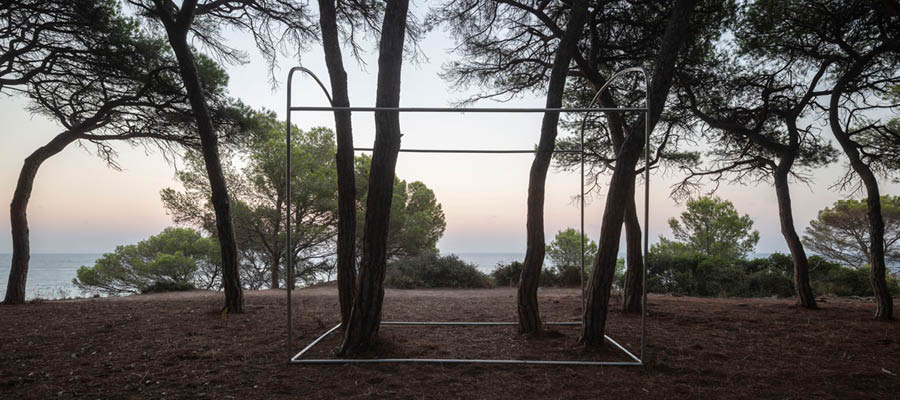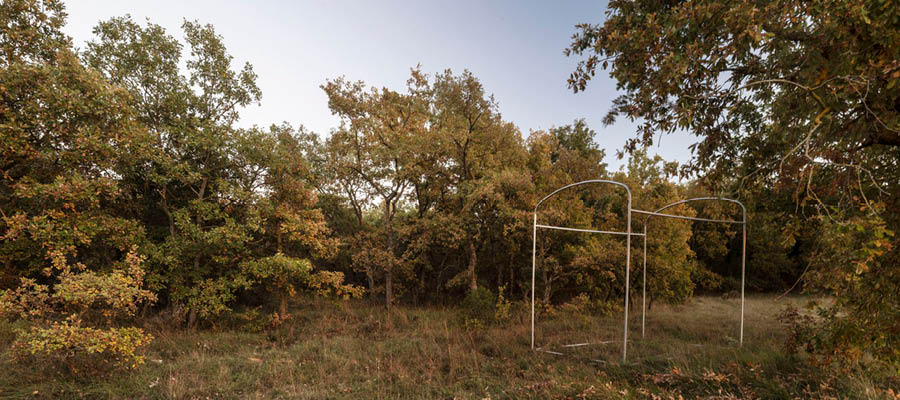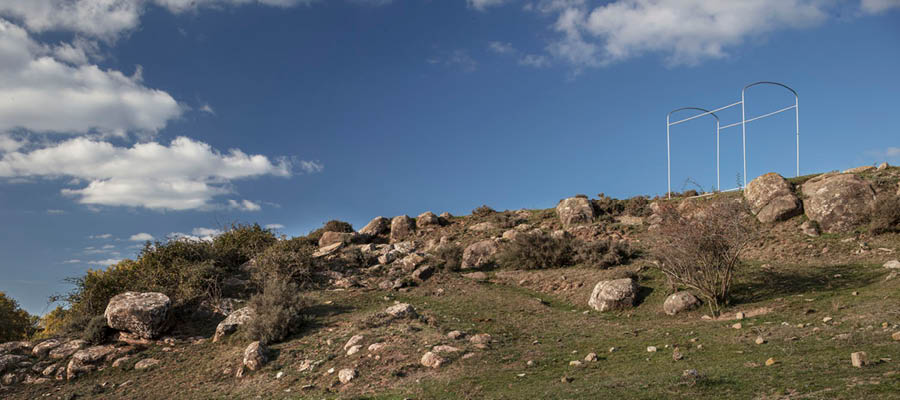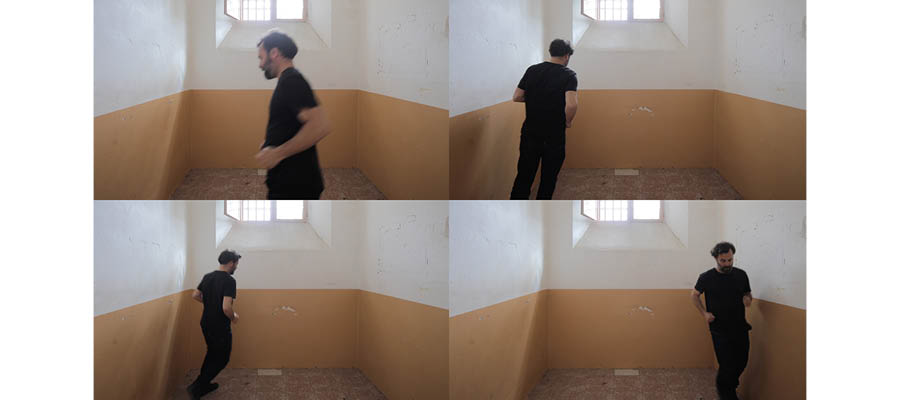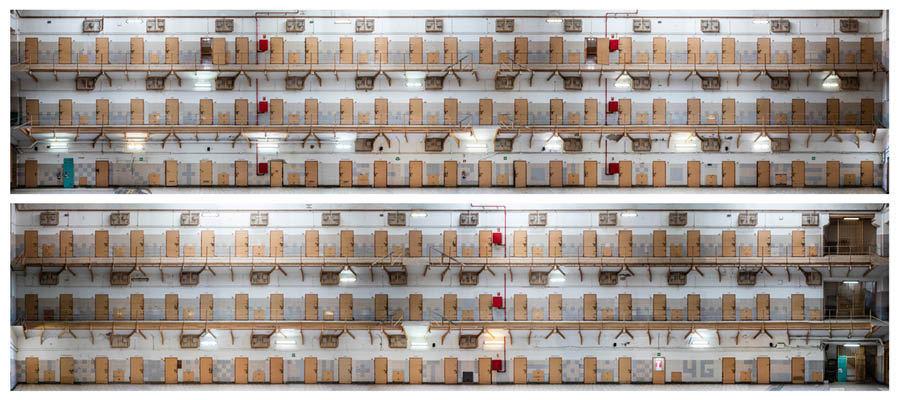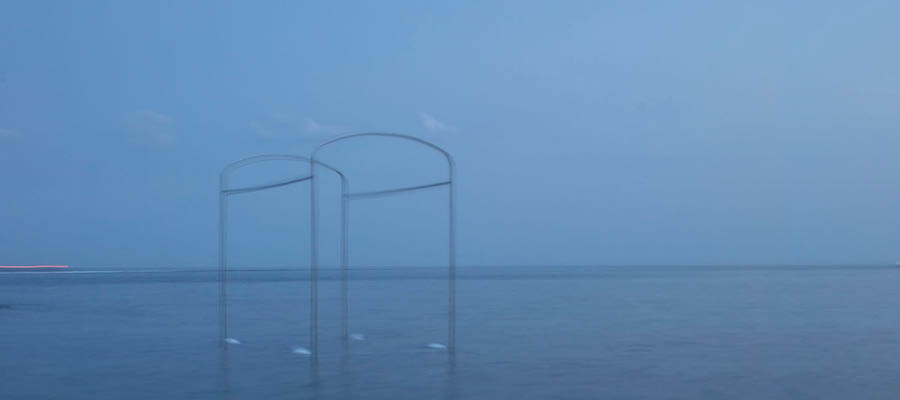
A nomadic cell by Adrià Goula
Until December 23, 2021, is held at the H2O Gallery in Barcelona, the exhibition Cel-la Nòmada, nomadic cell, by photographer, artist and architect Adrià Goula. Appreciated by AA for his work as an architectural photographer, this time Adria Goulà exhibits a personal project related to the memory of his grandfather, which combines photographs, videos and installation.
Interviewed by Léa Balmy
You created an installation, a nomadic cell, which you were able to transport and photograph in several places, and which is also included in the exhibition. What is the origin of this installation?
The project began as a series of artistic reflections on the cell where my grandfather was imprisoned in Barcelona’s Model Prison during the dictatorship as a form of political reprisal. At first it was a few photos, but keeping the camera between me and the walls that contained these memories created too much separation. Hence the need to reduce this distance to a minimum and came up with the idea of making rubbings of the walls so that paper was the minimum material needed to recover all these memories. These reflections extended to other languages, already thinking that the project would not remain in a strictly photographic project. Video and collage appeared. I wanted to make a project that would not only talk about existing elements, that would not only be a reflection on the past, but would create a new element, that would be like a tribute or a cathartic act that would allow all these memories locked up there to make room. Hence the idea of the Nomadic Cell, a light, removable and transportable structure that reproduces the exact size of the cell, but allows us to take it from there. The cell becomes a nomadic element, which we place in different landscapes, where the contrast between closed and open, between heavy and light, between an artificial and natural environment is highlighted. A cathartic act of sorts, of memory and at the same time of liberation, which generates many other parallel readings.
In fact, the process was not very different from the realization of an architectural project, with its sketches, its plans, the industrialists involved and the realization of a built work that is finally photographed. In this case, however, with a goal not so much architectural, to solve a specific program, but rather artistic, where the issues raised have to do with memory, being imprisoned, the desire to defend their own ideas and recognition to our grandparents.
How did the story of the exhibition “Celda nomada” lead you to use various mediums (photo, collage, video, drawings)?
It is true that the Cel-la Nòmada project represents a step forward, a step out of my comfort zone. I have always liked to work with photography as a self-sufficient object, as an artistic object in itself rather than as a window to another reality, as an almost sculptural object (see for example the Murmurs series). And it’s been a long time since I’ve done projects in which, even if the photographic result was photographic, they required play or manipulation in front of the camera. And in a way this project is a culmination of that process.
How do you articulate both your commissioned work and your personal projects?
I am an architect by training, and I worked for many years as an architect before devoting myself to architectural photography. In fact, I spent two years in Paris at Yves Lion Architectes Urbanistes, and I also created my own architectural firm, which suited my beginnings as a photographer. One of the things that interested me about doing photography was that there was a very fine line between professional work and an artistic project. It was easy to integrate into my professional projects which would allow me to generate a more personal and artistic line of work in parallel. I have been working this way for many years. It has been a natural progression, and I end up doing these works during days or moments between professional commissions. These are projects that extend over time and remain open for a long time and evolve over time. Usually exhibitions mean that a project ends up materializing in a certain number of printed works that sort of close the project, or at least a stage of the project. I have a few photographic projects that I have exhibited in different galleries in France and Spain, and many others that are in progress.
Cel.la Nomada
par Adria Goula
Galeria H2O, c. Verdi 152, Barcelona

